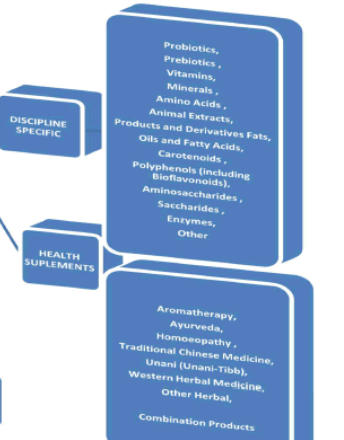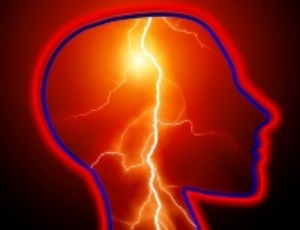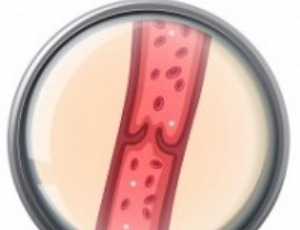Loading
Archives of Pharmacology and Therapeutics
ISSN: 2688-9609

2019
Volume 1, Issue 2, p25-58
Articles published in this issue are Open Access and licensed under Creative Commons Attribution License (CC BY NC) where the readers can reuse, download, distribute the article in whole or part by mentioning proper credits to the authors.
Platelet Hyperactivity and Dysfunction in Diabetes and Cancer
Bahram Alamdary Badlou
However, the entire coagulation cascade is dysfunctional, in progressed chronic diabetes and cancer patients.
Arch Pharmacol Ther, 2019, Volume 1, Issue 2, p25-26 | DOI: 10.33696/Pharmacol.1.006
Psychosocial Aspects of Drug Prescription: Recognizing These Phenomena to Improve the Quality of Clinical Practice
Jose Luis Turabian
The medical prescription corresponds to a complex act, which requires knowledge, professional experience, specific skills, a great sense of responsibility and an ethical attitude.
Arch Pharmacol Ther, 2019, Volume 1, Issue 2, p27-34 | DOI: 10.33696/Pharmacol.1.007
How Traditional Healers Diagnose and Treat Diabetes Mellitus in the Pretoria Mamelodi Area and How Do These Purported Medications Comply with Complementary and Alternative Medicine Regulations
Ondo Z.G
CAM is widely used by patients to treat and prevent certain diseases, providing emotional and physical support [1]. The National Centre for Complementary and Alternative Medicine (NCCAM) defines CAM as a “group of diverse medical and health care systems, practices, and products that are not presently considered to be part of conventional medicine” [2].
Arch Pharmacol Ther, 2019, Volume 1, Issue 2, p33-45 | DOI: 10.33696/Pharmacol.1.008
The Pathogenesis of Continuous Spike and Waves during Slow Sleep Syndrome: Short Communication
Miriam Kessi, Jing Peng, Lifen Yang, Yulin Tang, Chen Chen, Fei Yin, MD, Ph.D
Continuous spikes during slow wave sleep (CSWS) syndrome is an age-related and self-limited severe epileptic encephalopathy characterized by electrical status epilepticus in sleep (ESES) on electroencephalogram, seizures, and developmental regression
Arch Pharmacol Ther, 2019, Volume 1, Issue 2, p48-56 | DOI: 10.33696/Pharmacol.1.009
Admitting UnKnown Biosimilar- Drugs Affects Thrombosis and Haemostasis Processes
Bahram Alamdary Badlou
Accidental admitting and using (un-) known drugs might manipulate health and/or disease(s) of a subject in a positive (healing) and/or negative way (increased mortality and morbidity rate).
Arch Pharmacol Ther, 2019, Volume 1, Issue 2, p57-58 | DOI: 10.33696/Pharmacol.1.010
Recommended Articles
How Traditional Healers Diagnose and Treat Diabetes Mellitus in the Pretoria Mamelodi Area and How Do These Purported Medications Comply with Complementary and Alternative Medicine Regulations
CAM is widely used by patients to treat and prevent certain diseases, providing emotional and physical support [1]. The National Centre for Complementary and Alternative Medicine (NCCAM) defines CAM as a “group of diverse medical and health care systems, practices, and products that are not presently considered to be part of conventional medicine” [2].
The Profiling and Role of miRNAs in Diabetes Mellitus
Diabetes mellitus (DM) is an age-related metabolic disorder affecting 347 million people in modern society. Expanding its prevalence beyond developed countries, DM has emerged as a global public health issue associated with a high morbidity and mortality.
Diabetes Mellitus and Dengue
Diabetes mellitus is a common metabolic disorder that present with abnormal glucose metabolism. This metabolic disease is prevalent in many countries, worldwide. It is no doubt there might be a chance that diabetes mellitus might co-occur with other medical problems.
Identification of Risk Markers for Poorly Controlled Type 2 Diabetes Mellitus: A Retrospective Cross-Sectional Study with Focus on Quality Assurance Based on Real World Data
Type 2 diabetes mellitus (T2DM) is a metabolic disease defined by hyperglycemia. If not treated, chronic and even short periods (i.e. weeks) of undesirable hyperglycemia increases the risk for developing diabetic microvascular complications such as retinopathy, neuropathy, nephropathy, foot ulcers and amputations, and macrovascular complications such as cardiovascular disease including stroke
Risks and Prevalence of Diabetic Retinopathy in Children and Young People with Type 1 Diabetes Mellitus
Type 1 diabetes (T1D) is associated with microvascular and macrovascular complications.Duration of diabetes, poor glycaemic control, high blood pressure and proteinuria are reported risk factors contributing to the development of diabetes related complications.
Atypical Diabetes Mellitus Presentation, an Early Warning of Pancreatic Carcinoma
In 2020 we published a case-series detailing patients who died from pancreatic cancer (Appendix). These three patients were diagnosed with new-onset type 2 mellitus or deterioration of pre-existing type 2 diabetes shortly before their pancreatic malignancy was detected.
Plasma Non-Esterified Fatty Acids (NEFA) in Type 2 Diabetes Mellitus: Evidence on Pathophysiology
Type 2 diabetes mellitus (T2DM) is a metabolic dysfunction characterized by elevated levels of blood glucose as well as impaired lipid and protein metabolism. The mobilization of fatty acids is augmented in insulin resistance due to the failure of lipolysis inhibition by the hormone that further augments the increase in plasma NEFA levels.
Short Commentary on African Cuisine-Centered Insulin Therapy: Expert Opinion on the Management of Hyperglycaemia in Adult Patients with Type 2 Diabetes Mellitus
The traditional African diet is considered a very rich source of nutrition being largely whole with minimal processing [1]. There are unique challenges when managing Diabetes in Africa especially when making nutritional recommendations. An appropriate diet protects organ (heart, liver, pancreas etc.) health and vice versa.
Screening of Peripheral Arterial Disease in People with Type 2 Diabetes Mellitus – A Commentary Article
Peripheral arterial disease (PAD) is a prevalent form of atherosclerotic vascular disease in type 2 diabetes mellitus (T2DM). Diagnosis and treatment of PAD is more challenging in these patients. Presence of concomitant neuropathy masks typical pain symptoms, and typical criteria for intermittent claudication are not clearly met.
The Emerging Target Protein Tyrosine Phosphatase 1B (PTP1B) for Type 2 Diabetes Mellitus Management
Diabetes mellitus is a chronic multifactorial disorder affecting an increasing number of patients worldwide [1]. DM can be classified into four general categories, based on the classification reported in 2021 by the American Diabetes Association
About Scientific Archives
Scientific Archives is a global publisher initiated with the mission of ensuring equal opportunity for accessing science to research community all over the world. Spreading research findings with great relevance to all channels without any barrier is our goal. We want to overcome the challenges of Open Access with ensured quality and transparency.
